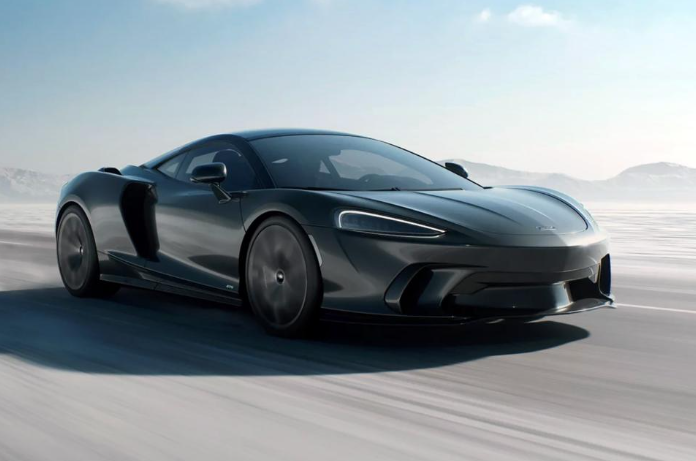More than a decade after the P1, McLaren has unveiled its successor – the W1 – to its Australian customers – a $4 million hybrid hypercar limited to 399 examples worldwide.
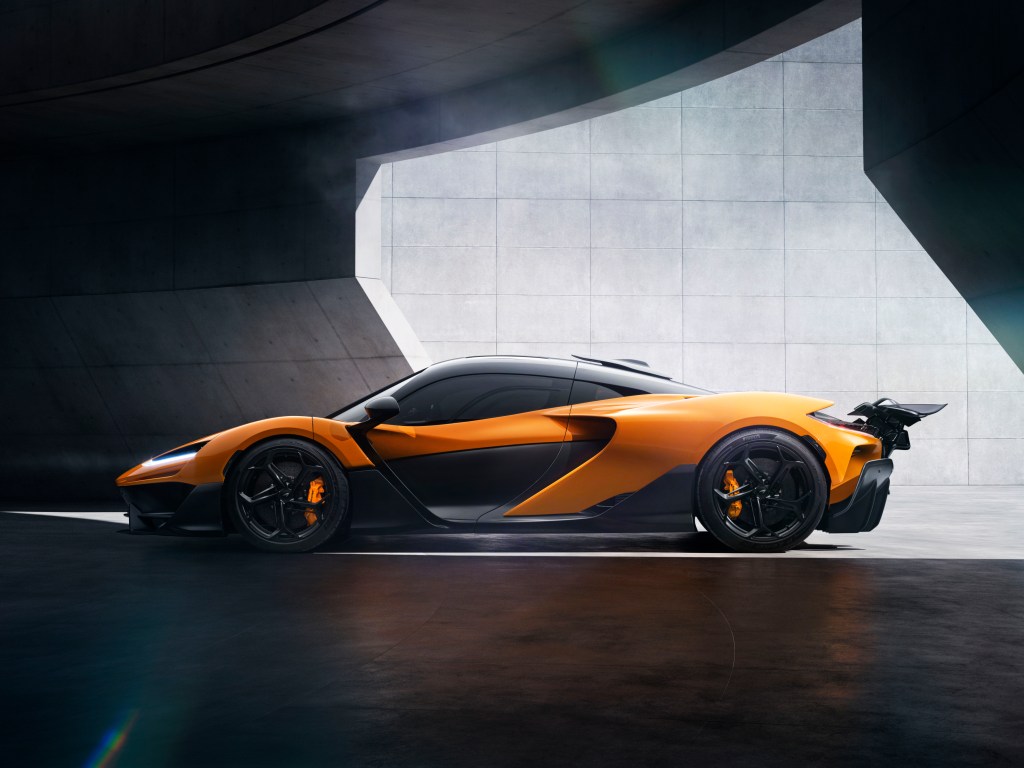
“How the hell are we going to deliver this?”
That was the first reaction inside the confines of McLaren’s Woking technology centre when the brief for the W1 landed on engineers’ desks, according to W1 Product Manager Heather Fitch.
“You’re looking at these things like, how do we create that? You’re asking for a car that is track based and laps faster than anything we’ve ever created. It still needs to be supremely comfortable on the road and does two of those things in one car. And you also want it to have a brand new engine and it has to be 1275 PS. That’s quite intimidating.”
Intimidating or not, five years later, the W1 stands as McLaren’s most powerful car to date – a $4 million, 937kW hybrid V8 hypercar. It follows the legendary F1 and the P1, and marks the British brand’s next step into a hybrid future.
Only 399 W1s will ever be built – a number Fitch says strikes the balance between exclusivity and feasibility.
“P1, if you remember, was 375 cars,” she tells Forbes Australia from a garage in the backstreets of Richmond. “For us, 399 was the right kind of balance of price and exclusivity and volume. We have very technical materials in the car, some expensive components, which determines a certain price of the vehicle. So really, we have to balance that against the volume.”

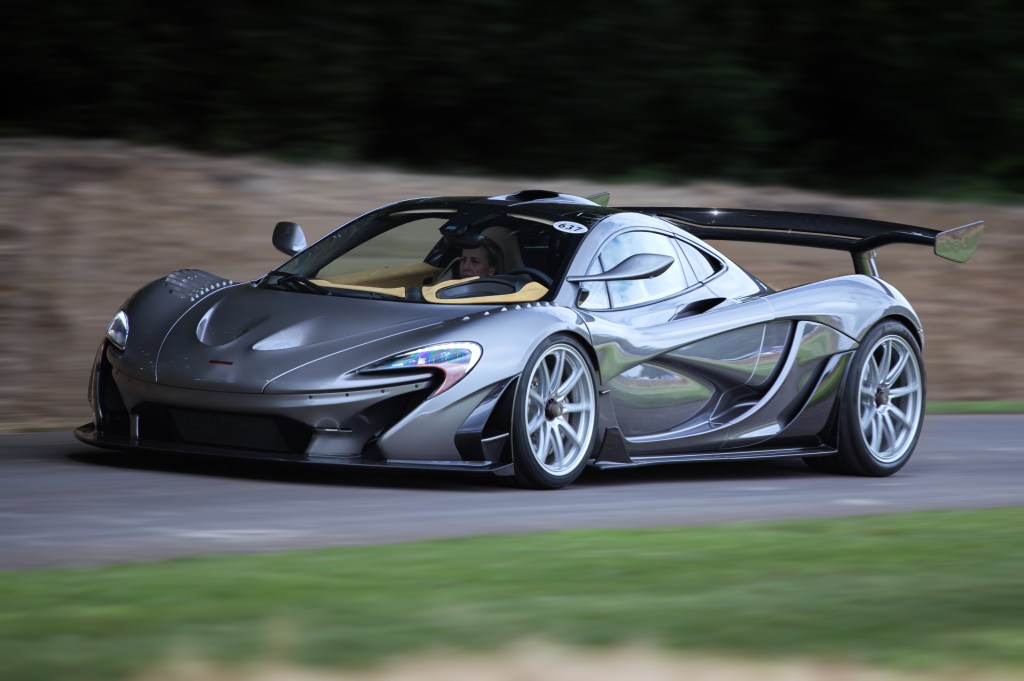
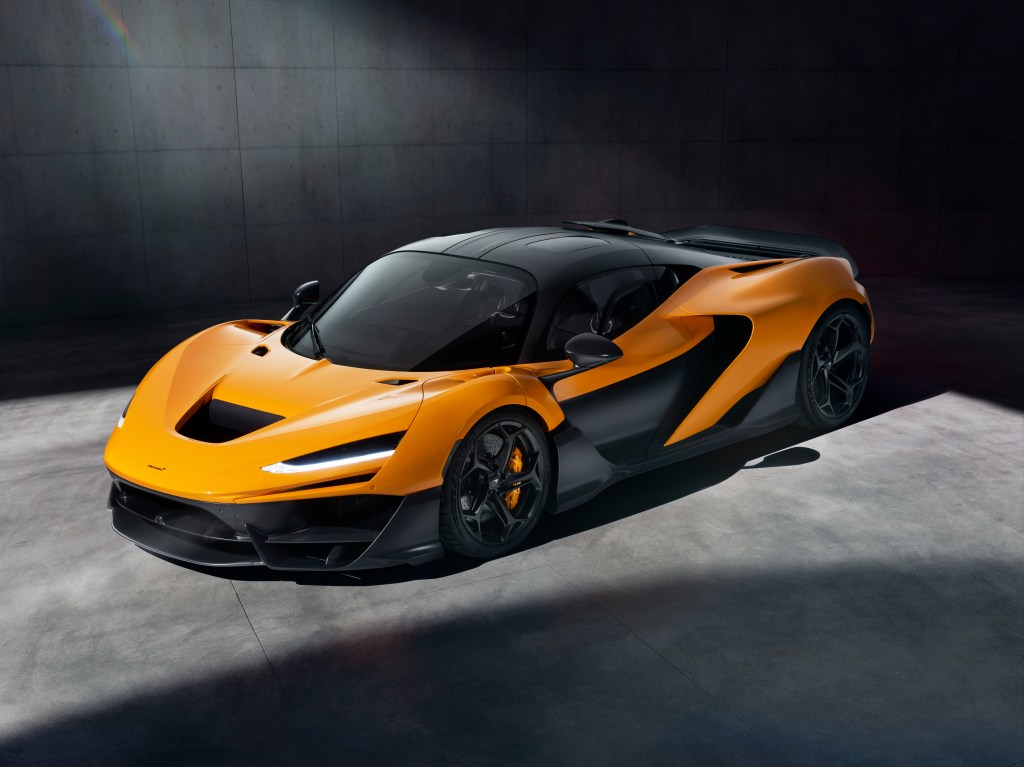
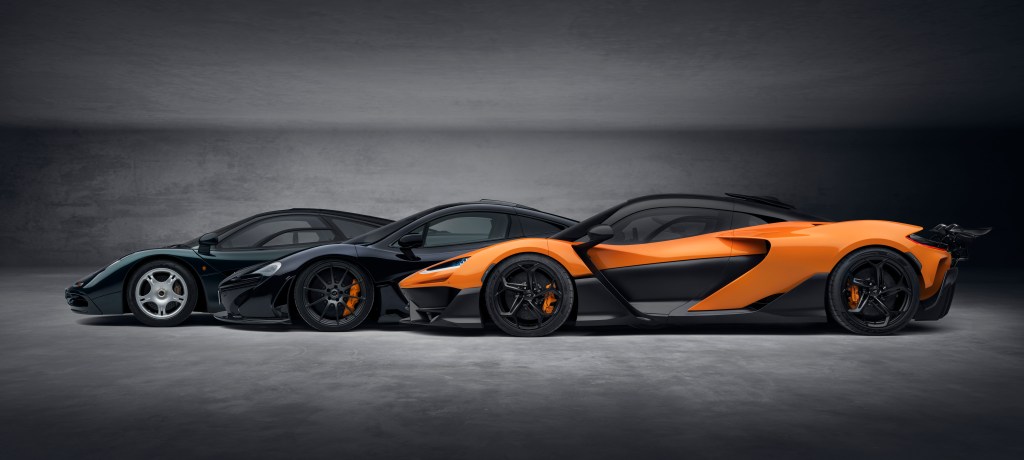
Who gets one?
And while McLaren won’t say who’s getting one, Fitch hinted that loyalty matters.
“We’ve got some customers who’ve got so many of our products in the past, and of course we talk with them. We make sure that they are aware of the next car that’s coming.”
So, what’s it like to drive?
“You just want to do more laps,” Fitch says after taking it for a test drive around the Britain’s iconic Silverstone circuit. “I literally had to be prized out of the car at the end because I just didn’t want to leave”
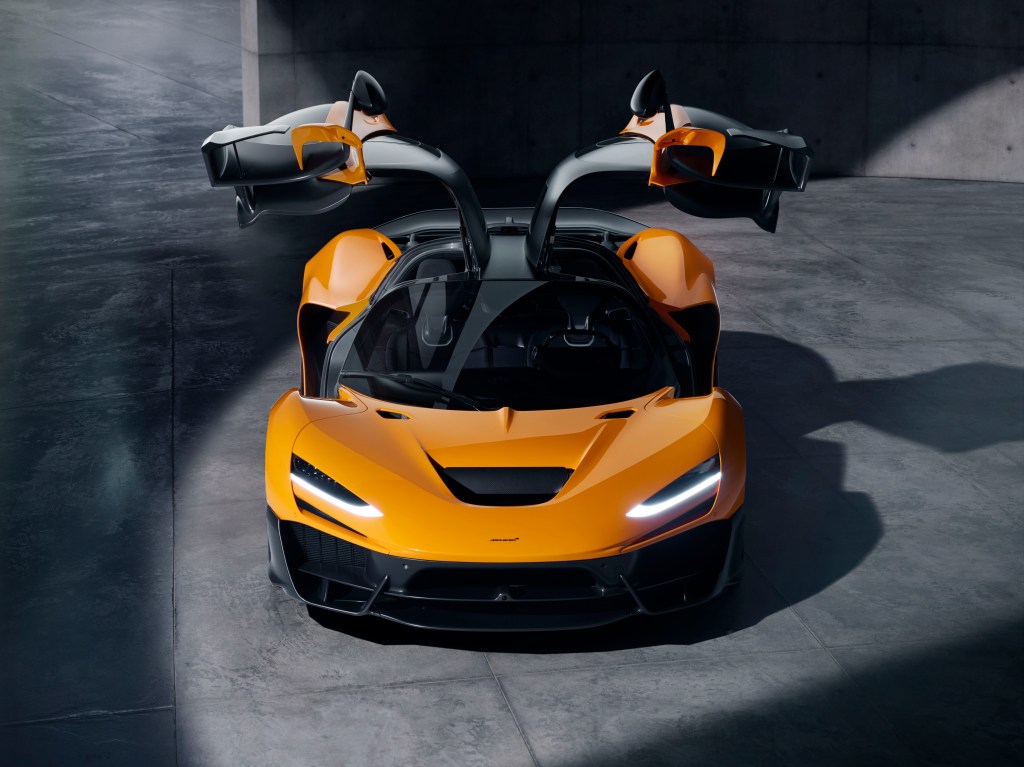
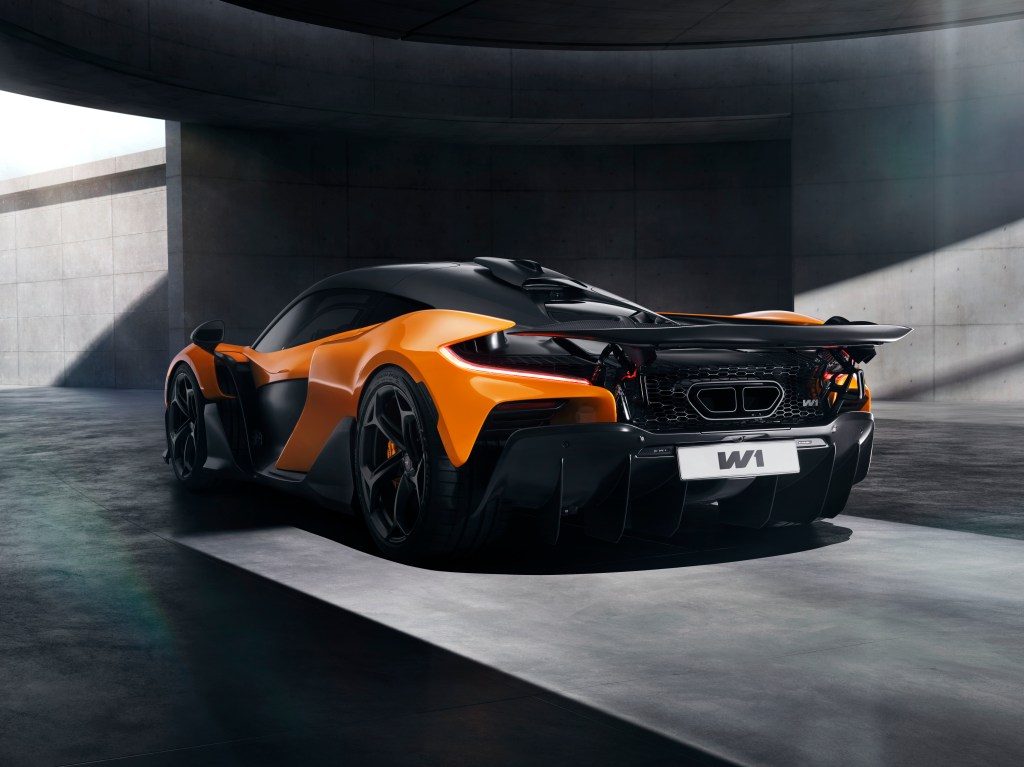
That enthusiasm runs deep across McLaren.
Even professional test drivers, she said, had to “recalibrate their minds” when testing the W1 for the first time. “They’re used to driving race cars. They’re used to driving P1s and whatever else we create, but there’s just that little, oh, it can do this. Oh, I can just keep going at this corner. I can attack the curb even harder. They can just push it a little bit more in ways they didn’t think they could.”
That recalibration comes from the W1’s new hybrid V8 powertrain – lighter, faster, and stronger than anything McLaren has built before.
The car’s figures are staggering: 937kW, 1340Nm, 0–100km/h in 2.7 seconds, 0–200km/h in 5.8 seconds, and a top speed of 350km/h. It also produces up to 1000kg of downforce, despite weighing just 1400kg.
Behind the numbers sits a shift in how McLaren designs its cars.
Fitch explained that the company now relies on VR and AR technology early in the process. “You don’t have a car to sit around in just yet, but you can sit in a seat that feels like a W1 seat. You’ve got a steering wheel that’s been 3D printed, and then the headset goes on, and you look around you, and you’re in the W1. You can really quickly start to iterate. Do we prefer A or B? Do we like this interior design or this one? You can go through things a lot quicker.”
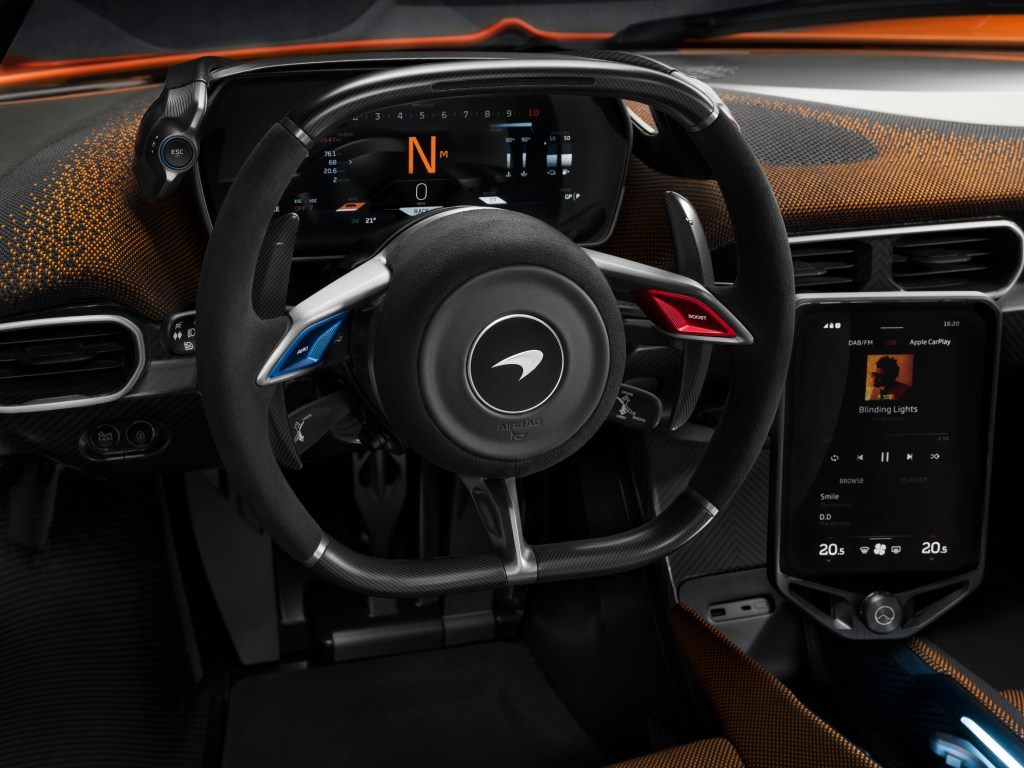
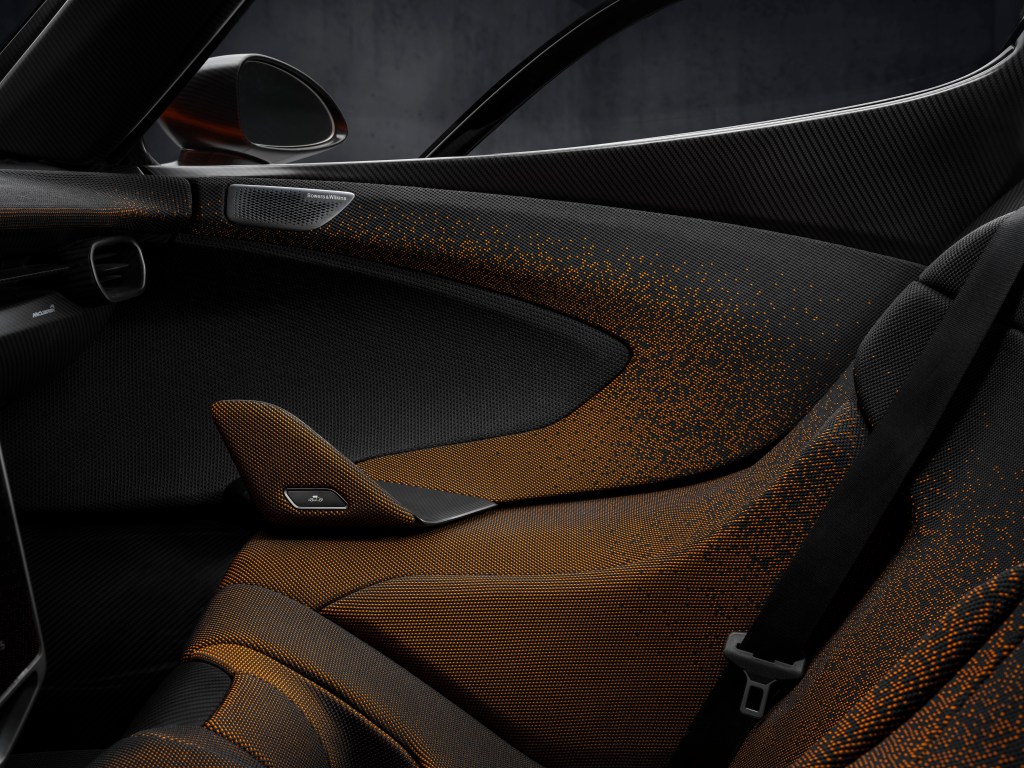
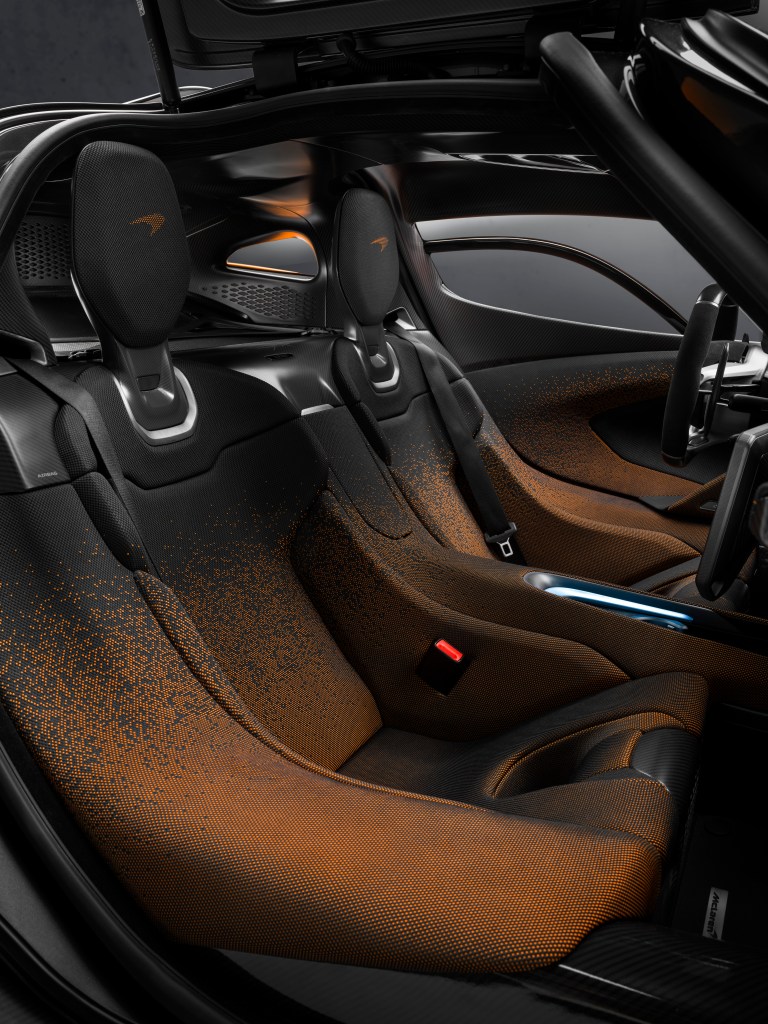
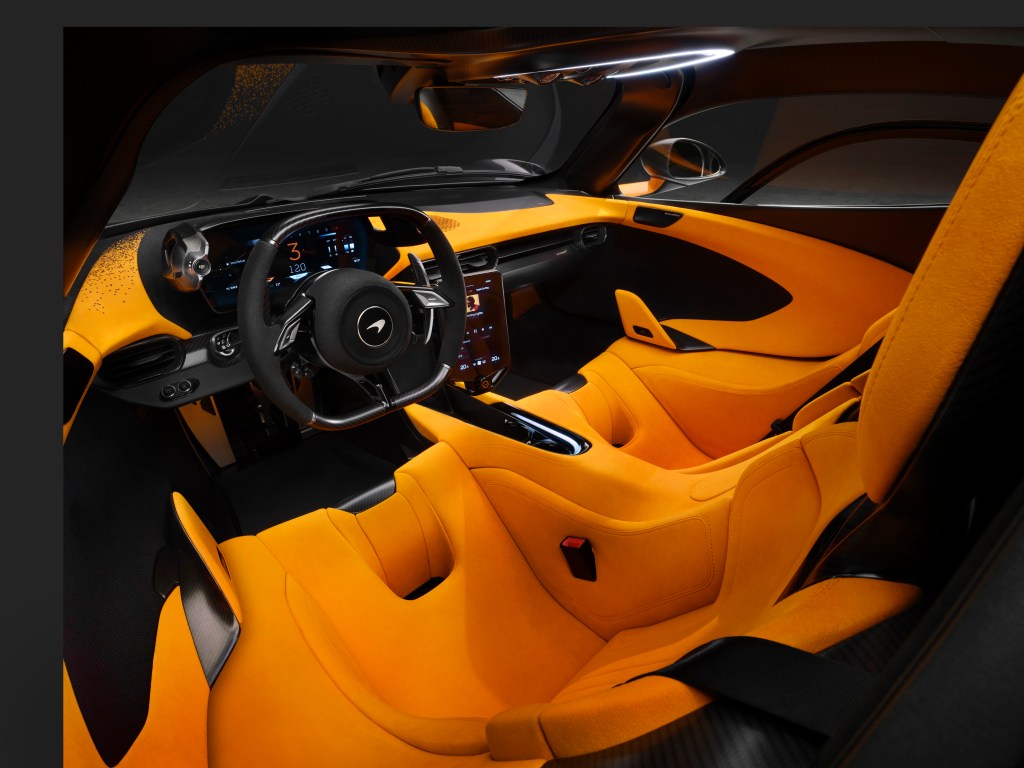
Technology wasn’t just about speed of development – it also helped refine the experience. The car’s active aerodynamics, Fitch said, make it “addictive” to drive.
“When you’re following another car, you can see that ability. You can see that control. And of course, see the blue flames shooting out the back as well when you’re following another car.”
The W1’s aerodynamics were built around a new carbon-fibre tub and a dramatic rear wing capable of extending more than 300 millimetres.
“It’s a massive difference,” she said. “We call that rear wing the McLaren Active Longtail rear wing. There’s a bit of a clue in the name. It’s a longtail. It expands the surface area, the air that it can play with. We’re connected up with the diffuser, kind of extending this base, and by having the wing all the way back there, we just get all these extra advantages from it. 1000 kilograms of downforce and it’s just cool in my opinion.”
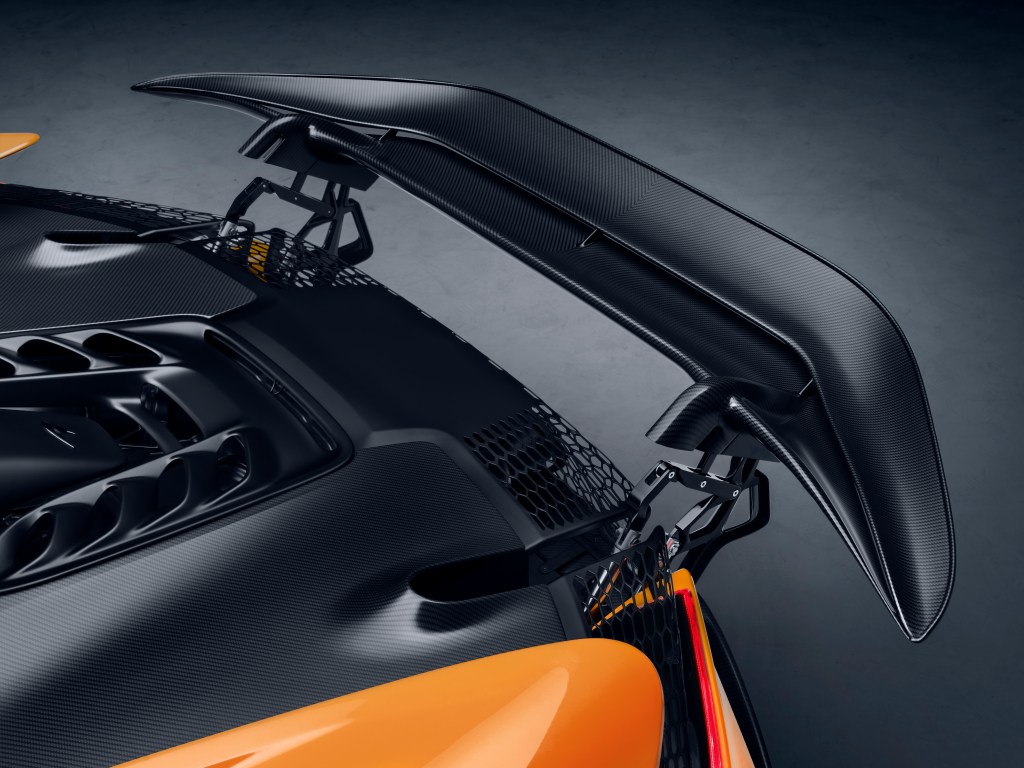
Still, for all the engineering focus, the W1 wasn’t built to be locked away.
“We designed it to be used and enjoyed every day,” Fitch said. “We really do care about cars that can be driven and are enjoyable to drive.”
That approach stems from McLaren’s small scale and personal connection to its customers. “We’re a small company, so we do actually get to build up personal relationships with our customers,” she said.
“I met a customer not long ago who takes his P1 on long road trips. Another chap drove to a racetrack in Europe with a fleet of McLarens. That’s just how they live their lives and spend their spare time. We speak to them and we go, okay, you can’t stop doing that. We have to keep delivering that.”
McLaren W1: By The Numbers
- Price: Approx. A$4 million
- Units: 399 worldwide
- Engine: All-new 4.0-litre twin-turbo V8 hybrid
- Total power output: 937kW / 1275PS
- Torque: 1340Nm
- Transmission: 8-speed dual-clutch automatic
- Drive: Rear-wheel drive
- Weight: 1,400kg
- Downforce: Up to 1,000kg
- 0–100km/h: 2.7 seconds
- 0–200km/h: 5.8 seconds
- Top speed: 350km/h (electronically limited)
- Electric range: 1–2km (EV-only mode)
Look back on the week that was with hand-picked articles from Australia and around the world. Sign up to the Forbes Australia newsletter here or become a member here.

